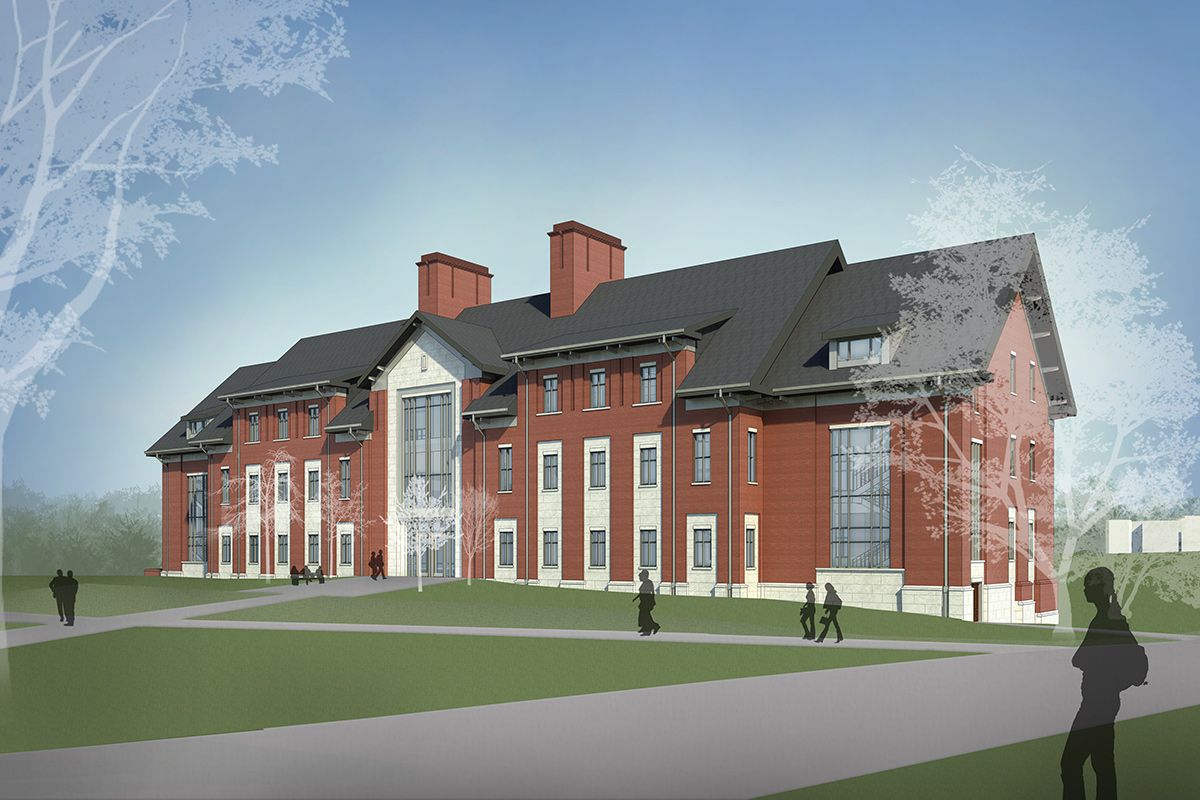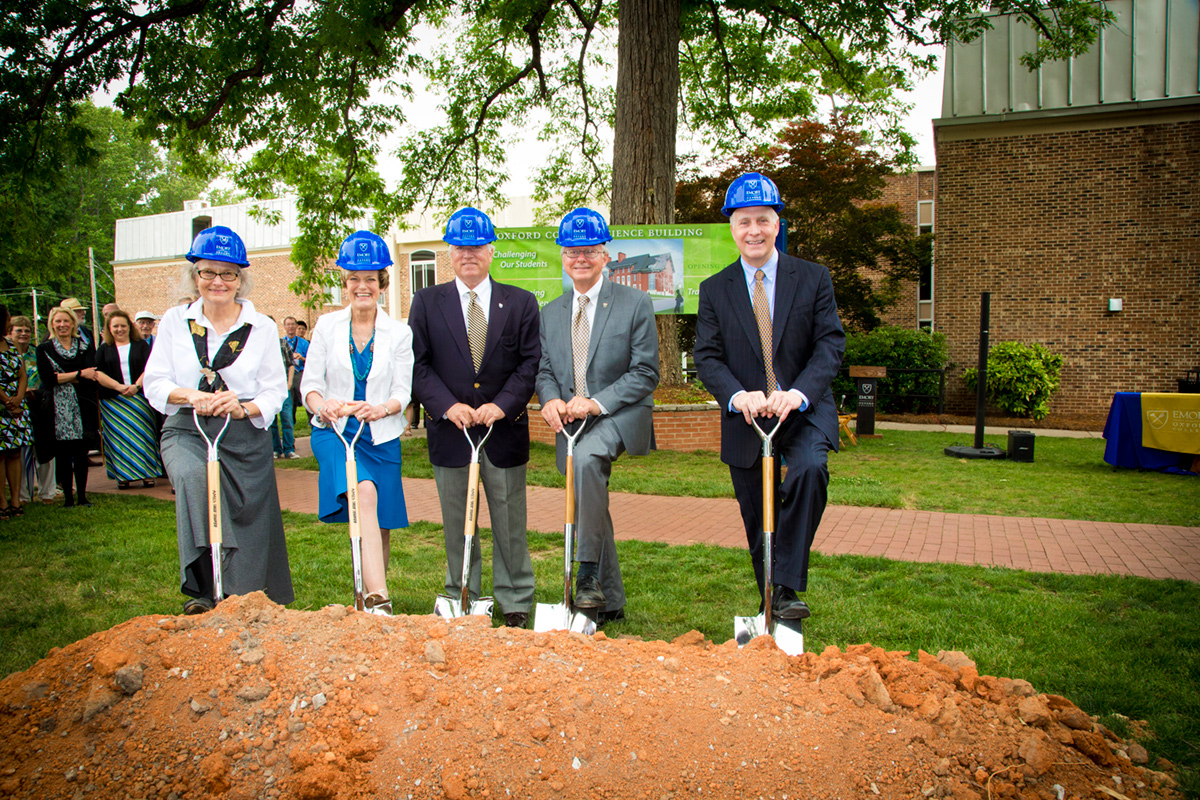Future of Oxford Science Rises on the Quad


Professor of Biology Eloise Carter, Zoe Hicks, Mike Dennis, Dean Stephen Bowen, and President James Wagner participate in the ceremonial ground breaking of the new science building.
To see the future of science at Oxford, you need only look at the northwest corner of the Quad. Next door to Phi Gamma Hall, Emory’s oldest academic building, and on a site where Branham and East residence halls once stood, construction has begun on a 57,500-square-foot building that will bring Oxford’s successful program in science to an even greater level. The anticipated date of opening is January 2016.
Says Oxford Dean Stephen Bowen, “Having a science facility that can meet the needs of our thriving science curriculum has been our primary goal for a number of years. The completion of this building will have an enormous impact.”
Professor of Biology Eloise Carter, Zoe Hicks, Mike Dennis, Dean Stephen Bowen, and President James Wagner participate in the ceremonial ground breaking of the new science building.
The long-awaited start of construction was cause for celebration. At a ceremony following Commencement 2014, Dean Bowen was joined by Zoe Hicks 63OX 65C 76L 83L and Mike Dennis 67OX 69C, who chaired the alumni fund-raising committee for the science building; Eloise Carter 78G 83PhD, professor of biology who led the faculty team providing input into the building’s design; and Emory University President James Wagner in symbolically breaking ground on the project.
Supporting science at Oxford
Despite being housed in Pierce Hall, built in 1962, and expanded in 1985, Oxford’s science program has had wide and measurable success. Students who enter Oxford expressing interest in science, technology, engineering, and mathematics (STEM) majors continue on to graduate in STEM disciplines at higher rates than students nationwide.
Carter says, “Oxford’s science alumni are teachers and professors of science, challenging and inspiring the next generation of scientists. They are nurses, veterinarians, physicians, and pharmacists. They are biologists, physicists, chemists, and geologists, who fight disease at the CDC, work on the influenza virus at Cambridge University, and curate fossils at the Smithsonian Institution.”
Architectural design
The new science building will be the largest structure on the Oxford campus. It is designed by EYP, an award-winning architectural firm noted for higher education facilities that reflect each institution’s history while also meeting the space and technology needs of contemporary education. The building will be clad in red brick, used in several of Oxford’s historic buildings, with elements of Georgia Lithonia granite, a locally quarried stone that adorns many buildings around the campus.
The main entrance to the four-story building, which will be from the south (Quad) side, will lead visitors to the “Nucleus,” a two-story, dramatic and inviting gathering space. Designed to feel like the center of the building, it also will be used for group study, learning activities, or impromptu meetings for faculty and students. A large, two-story window will fill the Nucleus with light, and it will be graced with wood-plank flooring and Gothic-influenced decorative details.
North elevation of the new Oxford science building, with view toward the Quad.
Laboratory and learning spaces
The building is designed to be a comprehensive learning environment, with the overriding aim of promoting and encouraging collaboration. Teaching spaces will be able to house a variety of learning activities, and each floor will feature a research/investigation zone with space for instrumentation and support, encouraging faculty/student research.
The building includes:
- Nine teaching laboratories, with adaptable space supporting biology, chemistry, physics, geology, and environmental and field sciences
- Three laboratories for cross-disciplinary faculty and student research
- Three classrooms supporting diverse instructional approaches with the latest technology and furnishings
- An imaging center with specialized microscopy, lighting, and photography
- Public gathering spaces including a large atrium, outdoor porch, and balcony study area
While the greatest impact will be on those who choose science majors, all students regardless of major are required to take at least one laboratory course, and science education at Oxford emphasizes learning to think like a scientist. Adds Dean Bowen, “This building will touch the lives and education of every Oxford student.”



